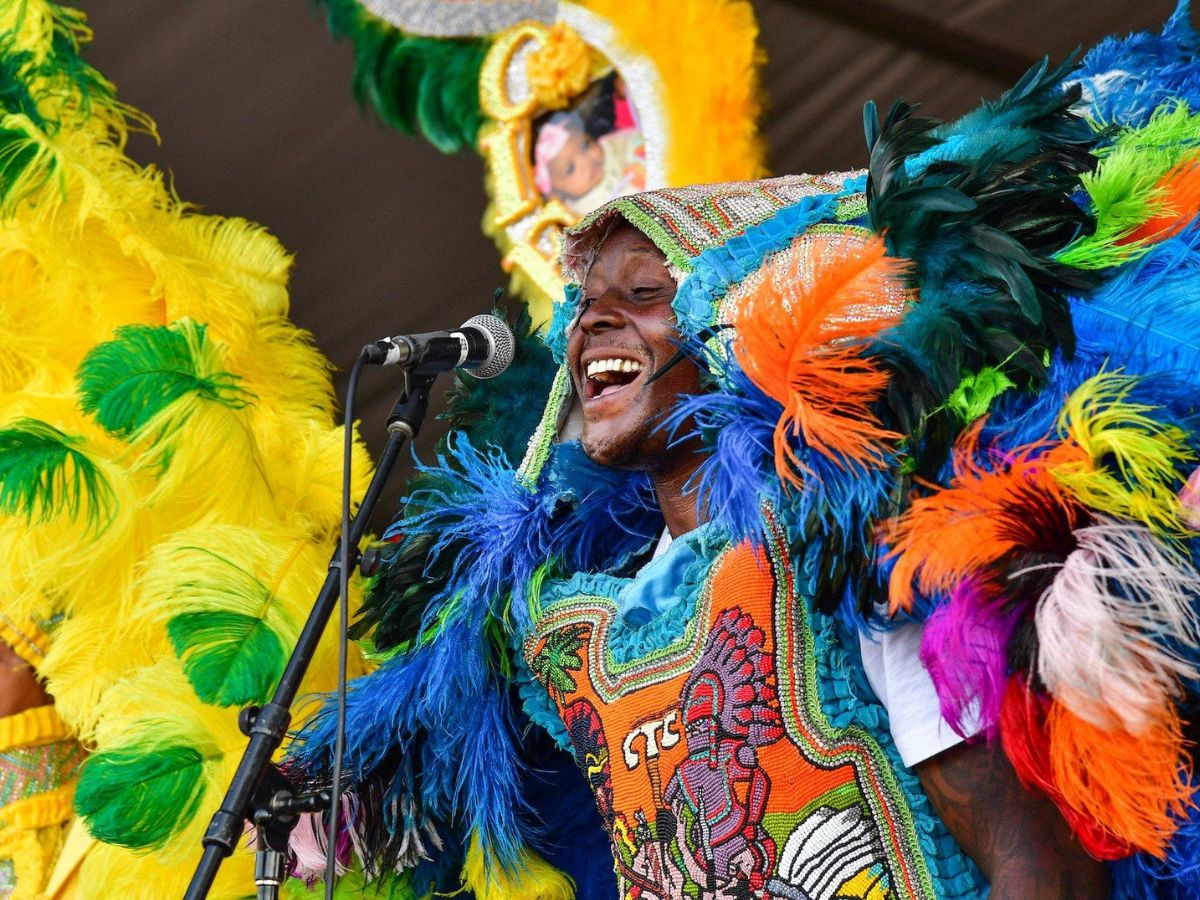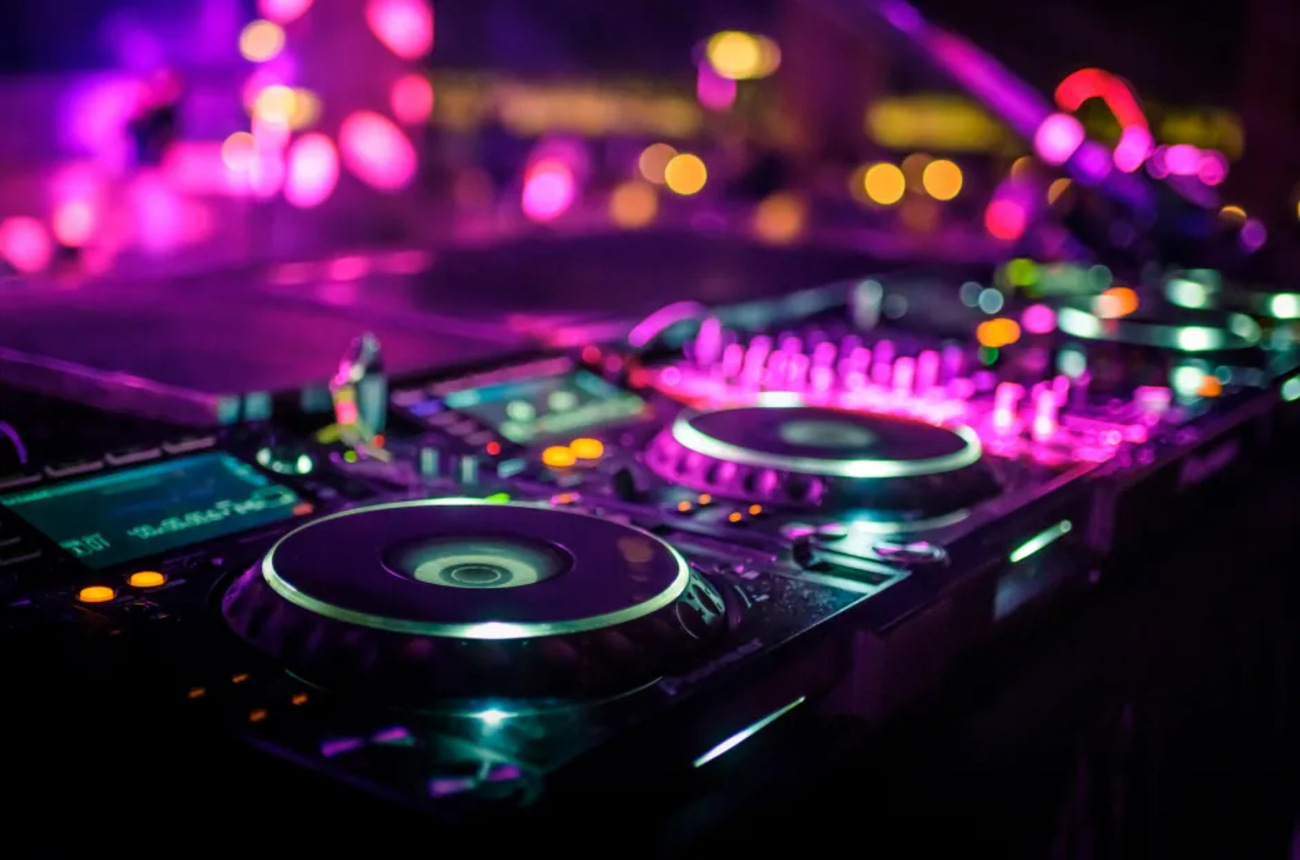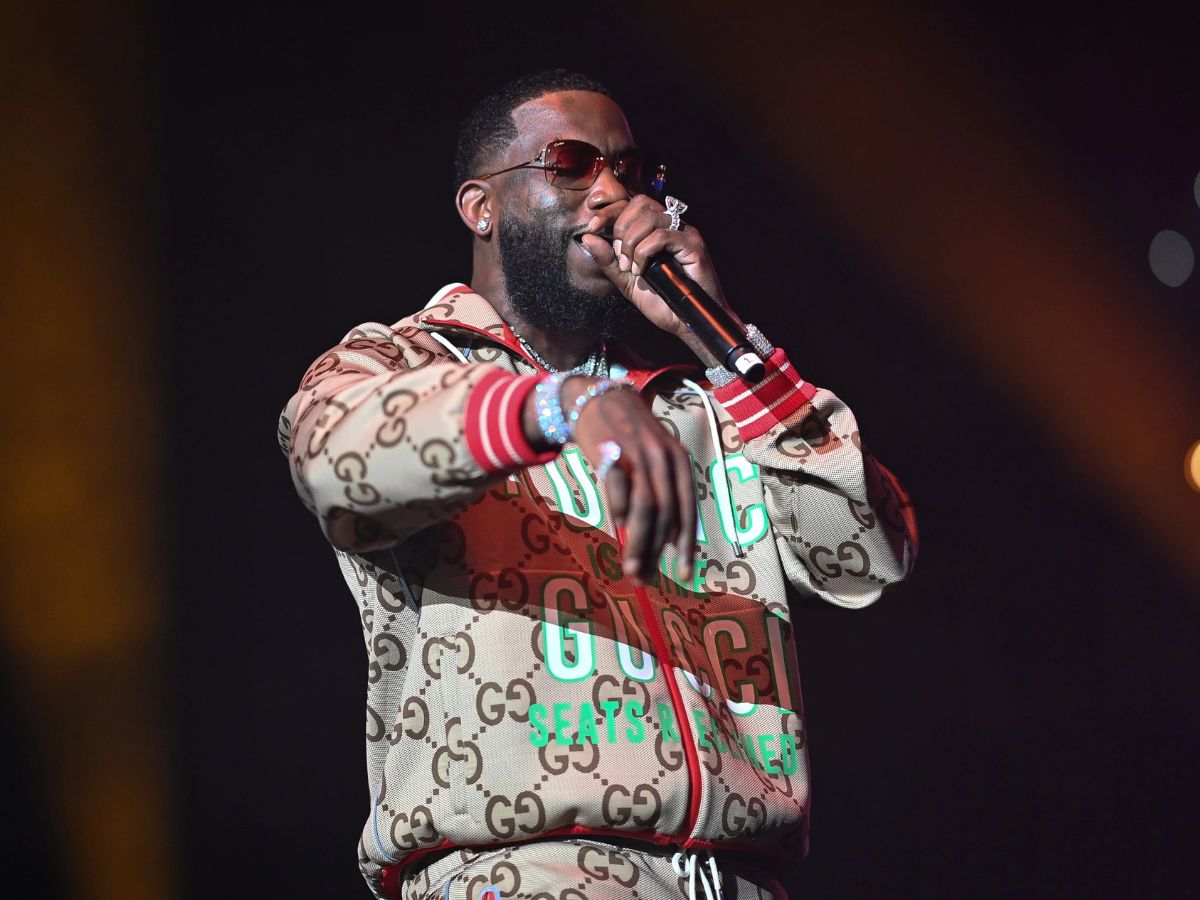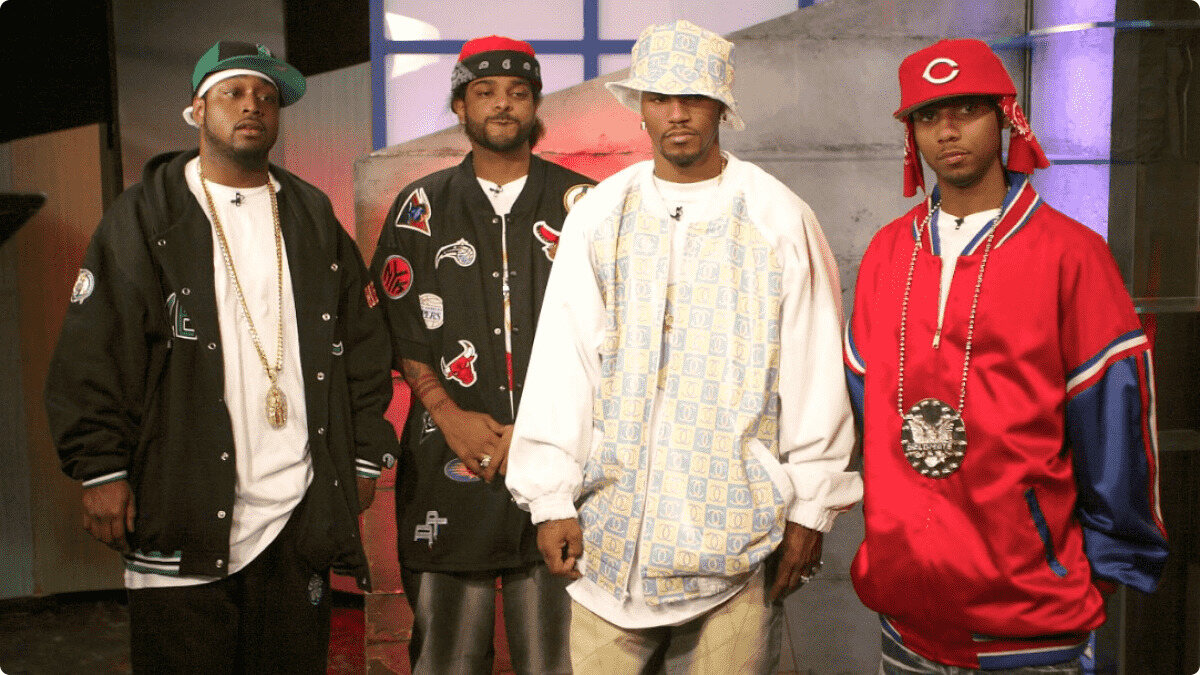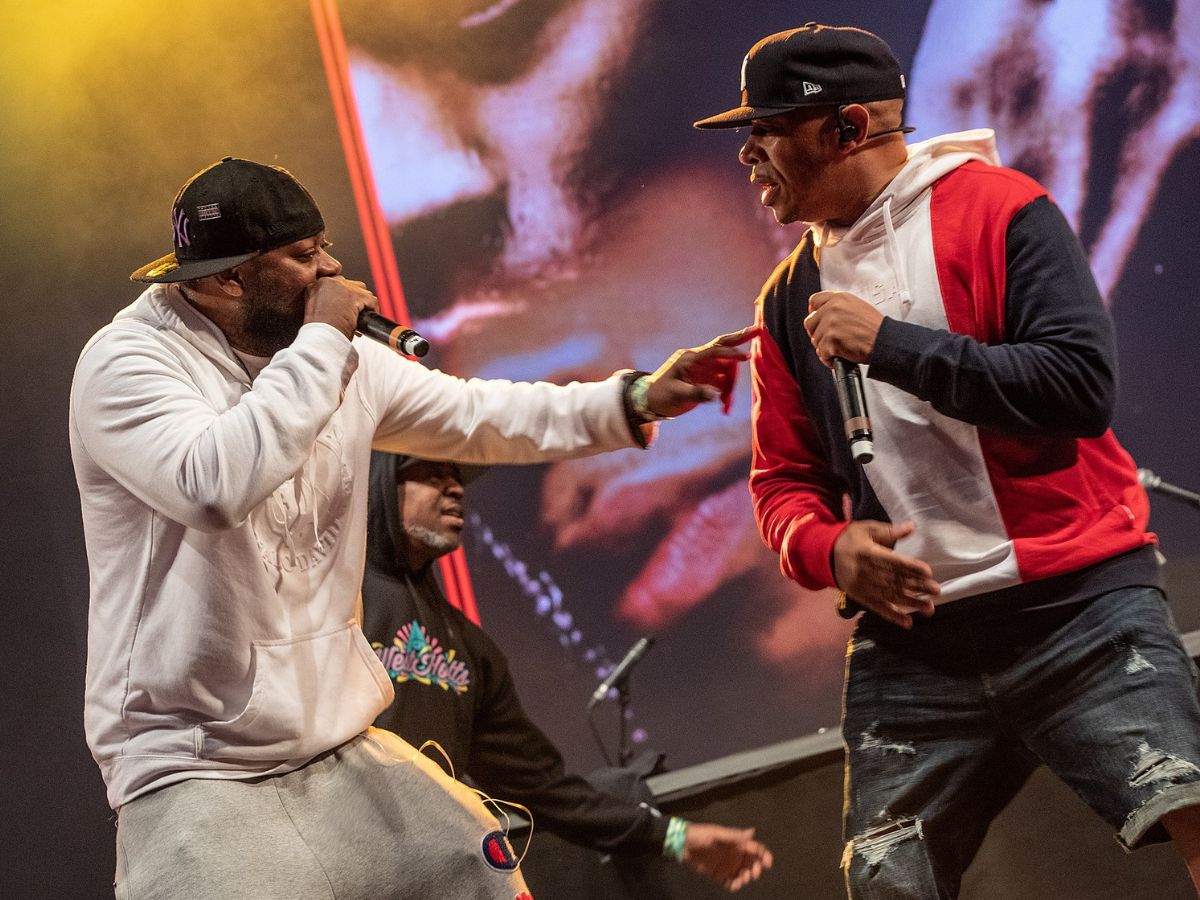

Hip Hop
What Bpm Are Most Hip Hop Songs
Modified: January 22, 2024
Discover the average BPM of hip hop songs and understand the rhythmic patterns in this popular music genre. Learn more about hip hop beats and tempos on our website.
(Many of the links in this article redirect to a specific reviewed product. Your purchase of these products through affiliate links helps to generate commission for AudioLover.com, at no extra cost. Learn more)
Table of Contents
Introduction
Hip hop, a genre that originated in the Bronx in the 1970s, has become a global phenomenon, influencing music, fashion, and culture. With its unique blend of rap verses and catchy beats, hip hop has captured the hearts of millions around the world. One crucial element that defines the essence of hip hop music is its rhythm, shaped by the tempo or beats per minute (BPM).
In the world of music, BPM refers to the measurement of the tempo or speed of a song, expressed as the number of beats occurring per minute. The BPM of a track sets the pace, energy, and mood, and in hip hop, it plays a pivotal role in determining the vibe and flow of a song.
Understanding the influence and significance of BPM in hip hop is essential for both artists and fans. It affects the overall feel of the music, from the way artists deliver their verses to how listeners connect and engage with the beats. In this article, we will delve into the world of BPM in hip hop, exploring the different ranges, factors that influence BPM selection, popular BPMs in classic and contemporary hip hop, the role of BPM in hip hop production, and more.
The Influence of BPM in Hip Hop
BPM has a profound impact on the overall feel and energy of hip hop music. It sets the pace and tempo, dictating the rhythm and flow of the lyrics and instrumentals. A higher BPM creates a faster-paced, energetic vibe, while a lower BPM slows things down and creates a more laid-back atmosphere. This distinction allows hip hop artists to experiment with different moods and create diverse sonic experiences.
One of the key influences of BPM in hip hop is its effect on the delivery of the lyrics. A higher BPM often leads to faster, more rapid-fire rapping, allowing artists to showcase their technical prowess and agility. It creates a sense of urgency and intensity, driving the energy of the song forward. On the other hand, a lower BPM lends itself to a more relaxed and melodic style of rap, providing artists with space to emphasize wordplay and storytelling.
BPM also plays a crucial role in engaging the listener. Different tempos have the power to evoke distinct emotions and intensify the connection between the audience and the music. For example, a high BPM can elicit excitement, pumping up the energy and inducing a sense of movement and dance. In contrast, a slower BPM can evoke introspection, allowing listeners to absorb the lyrics and feel the emotions conveyed in the song.
Furthermore, the influence of BPM extends beyond individual songs. It shapes the subgenres within hip hop, giving rise to unique styles and movements. For instance, the emergence of trap music in the 2000s brought with it a new wave of hip hop characterized by heavy basslines and rapid hi-hats. The genre’s signature sound is often set at a slower BPM, creating a hypnotic and pulsating rhythm that defines trap music.
Overall, the influence of BPM in hip hop is undeniable. From the way artists deliver their verses to the emotional connection they establish with their audience, BPM serves as a powerful tool for shaping the sound and impact of hip hop music.
BPM Ranges in Hip Hop Music
Hip hop music encompasses a wide range of tempos, each contributing to the diverse soundscape of the genre. While there is no strict rule on BPM ranges in hip hop, certain tempos have become synonymous with specific subgenres and eras. Let’s explore some of the common BPM ranges found in hip hop music.
One of the most well-known BPM ranges in hip hop is in the mid to high 80s. This range became popular during the early days of the genre, characterized by classic tracks from artists like Run-D.M.C., Eric B. & Rakim, and LL Cool J. The 80s BPM range exudes a vibrant energy and is often associated with the golden age of hip hop. Songs in this range typically have a lively and upbeat feel, making them perfect for breakdancing and partying.
Another common BPM range in hip hop is in the mid to high 90s. This range gained prominence in the 1990s during the West Coast and East Coast rivalry. Iconic tracks like Dr. Dre’s “Nuthin’ but a ‘G’ Thang” and The Notorious B.I.G.’s “Juicy” fall into this BPM range. The mid to high 90s BPM brings a groovy yet hard-hitting vibe, capturing the essence of the era and the gritty authenticity of street storytelling.
Moving into the 2000s, a lower BPM range became popular with the rise of southern hip hop and the emergence of subgenres like crunk and trap. Songs in the mid to low 70s to low 80s BPM range, such as UGK’s “Int’l Players Anthem” and Lil Jon’s “Get Low,” are known for their heavy basslines and infectious hooks. This slower BPM range creates a hypnotic and catchy rhythm that invites listeners to move and groove.
In recent years, there has been a trend towards even slower tempos in hip hop, particularly in the subgenre of “chill hop” and lo-fi hip hop. These tracks often fall into the low to mid 60s BPM range, creating a laid-back and relaxing atmosphere. Artists like Nujabes and J Dilla have popularized this mellow and introspective style, perfect for studying, relaxing, or simply unwinding.
It’s important to note that these are just general BPM ranges and that hip hop music is incredibly diverse, with artists constantly pushing boundaries and experimenting with different tempos to create unique sounds and styles.
From the high-energy beats of the 80s to the slower and more introspective vibes of contemporary hip hop, the range of BPMs in the genre ensures a dynamic listening experience for fans worldwide.
Factors Affecting BPM Selection in Hip Hop Songs
Choosing the right BPM for a hip hop song involves a variety of factors that contribute to the overall vision and desired impact of the track. While personal preferences and artistic intentions play a role in BPM selection, there are several key factors that influence this decision-making process. Let’s explore some of the factors that affect BPM selection in hip hop songs.
1. Lyrics and Rap Style: The content and delivery of the lyrics play a significant role in determining the BPM of a hip hop song. Fast-paced, complex lyrics often call for a higher BPM, allowing artists to showcase their lyrical dexterity. On the other hand, slower BPMs provide more room for artists to deliver laid-back, melodic verses or emphasize storytelling.
2. Mood and Emotion: The desired mood and emotion of a hip hop song also influence the BPM selection. For example, a high-energy party anthem may call for a faster BPM to create an exciting and lively atmosphere. In contrast, a song with introspective or melancholic themes might benefit from a slower BPM to convey a sense of introspection and emotional depth.
3. Target Audience: Consideration of the target audience is crucial when selecting the BPM for a hip hop song. Different demographics may respond better to certain BPM ranges. For instance, an audience more inclined towards dancing and movement might prefer songs with higher BPMs, while a more contemplative audience may resonate with slower-paced tracks.
4. Genre and Subgenre: The genre and subgenre of hip hop being explored can heavily influence the BPM selection. Each subgenre has its own distinct characteristics and associated BPM ranges. For instance, trap music typically features a slower BPM, while boom bap or old-school hip hop often favors faster tempos.
5. Production Style: The desired production style and the instrumental elements also come into play when deciding the appropriate BPM. The tempo should complement the chosen sounds, drums, and overall sonic atmosphere, creating a cohesive and engaging listening experience.
6. Collaboration and Feature Artists: If a song features guest artists or collaborations, their individual styles and preferences may influence the BPM selection as well. It is essential to find a balance that allows different artists to shine in their respective verses while maintaining the overall cohesiveness of the song.
7. Current Musical Trends: Trends in hip hop music can also impact BPM selection. Paying attention to the current musical climate and what is resonating with listeners can help artists and producers make informed decisions about the BPM of their songs.
Overall, the BPM selection in hip hop songs involves a delicate balance between artistic intentions, audience preferences, and various contextual factors. By considering these factors, artists and producers can create tracks that effectively convey the desired emotions, capture the essence of the genre and subgenre, and resonate with their target audience.
Popular BPMs in Classic Hip Hop Songs
Classic hip hop songs have left an indelible mark on the genre, shaping its history and influencing generations of artists. These influential tracks often had distinct BPM ranges that contributed to their iconic sound and impact. Let’s explore some popular BPMs in classic hip hop songs that have stood the test of time.
One BPM range that resonates in the realm of classic hip hop is in the mid-80s to low 90s. This range encompassed many of the early pioneering tracks that laid the foundation for the genre. Examples of legendary songs in this range include Grandmaster Flash and The Furious Five’s “The Message” (92 BPM) and Afrika Bambaataa & The Soulsonic Force’s “Planet Rock” (115 BPM). These tracks captured the spirit of the era, combining infectious beats with socially conscious lyrics.
Another notable BPM range in classic hip hop falls around the mid to high 90s. This range gained prominence during the 1990s, often referred to as the golden age of hip hop. Notable songs in this range include Wu-Tang Clan’s “C.R.E.A.M.” (90 BPM) and Nas’ “N.Y. State of Mind” (94 BPM). These tracks showcased a raw and gritty sound that showcased the intricacies of lyricism and storytelling.
As hip hop evolved throughout the years, a lower BPM range emerged, giving rise to ’90s West Coast rap. Songs like Dr. Dre’s “Nuthin’ but a ‘G’ Thang” (94 BPM) and Snoop Dogg’s “Gin and Juice” (94 BPM) exemplify this relaxed yet groovy style. The slower BPM range allowed for the incorporation of smooth, melodic hooks and laid-back verses.
In addition to these BPM ranges, classic hip hop also had diverse tracks that ventured into different tempos. Run-D.M.C.’s “It’s Tricky” (122 BPM) stood out with its faster tempo, illustrating their unparalleled skill and precise delivery. Public Enemy’s “Fight the Power” (107 BPM) carried a vibrant energy with its mid-tempo groove and socially charged lyrics.
Classic hip hop songs not only provided a sound that resonated with listeners but also left their mark on the cultural landscape. The BPMs of these tracks played a significant role in shaping their character and influence on subsequent generations of artists.
It’s important to note that these are just a few examples, and the range of BPMs in classic hip hop is vast, reflecting the diversity and creativity within the genre. Classic hip hop exemplifies the power of the right BPM to create timeless music that continues to impact and inspire new generations of hip hop enthusiasts.
Trends in BPMs in Contemporary Hip Hop
Contemporary hip hop is a constantly evolving genre that embraces a wide range of sounds and styles. In recent years, there have been notable trends in the BPMs of hip hop songs, reflecting the shifting landscape of the music industry and the influences that artists draw from. Let’s delve into some of the trends in BPMs that have emerged in contemporary hip hop.
One significant trend in contemporary hip hop is the rise of slower BPMs. Many artists have gravitated towards a more laid-back, atmospheric sound, favoring BPMs in the mid-70s to low 80s range. This slower tempo allows for a more relaxed and introspective vibe, providing artists with the space to explore intricate wordplay and deeper emotions. Artists like Drake, Kendrick Lamar, and J. Cole have exemplified this trend with tracks like “Hotline Bling” (134 BPM), “HUMBLE.” (150 BPM), and “No Role Modelz” (134 BPM) respectively.
Another prevalent trend is the incorporation of trap music into the mainstream. Trap music originated in the southern United States and is characterized by its heavy bass, rhythmic hi-hats, and slower BPMs. Tracks in this subgenre often fall within the mid to low 70s BPM range, giving the music a hypnotic and hard-hitting feel. Artists such as Future, Migos, and Travis Scott have gained widespread popularity by embracing the trap sound and utilizing BPMs like “Mask Off” (150 BPM), “Bad and Boujee” (127 BPM), and “SICKO MODE” (155 BPM).
On the opposite end of the spectrum, there has also been a rise in faster BPMs in contemporary hip hop. Some artists have tapped into the energy and excitement of higher tempos, incorporating elements from genres like electronic dance music (EDM) and pop. This trend allows for a more upbeat and energetic vibe, often creating an ideal backdrop for catchy hooks and party anthems. Songs like Cardi B’s “Bodak Yellow” (125 BPM) and Lil Nas X’s “Old Town Road” (136 BPM) exemplify the fusion of hip hop with higher BPMs.
A notable development in contemporary hip hop is the experimentation with tempo changes within a single song. Artists are increasingly incorporating sudden shifts in BPM, adding a dynamic element to their tracks. This technique allows for the blending of different styles and moods, creating unique sonic experiences. Childish Gambino’s “This Is America” (120-140 BPM) and Kendrick Lamar’s “DNA.” (125-174 BPM) showcase the use of tempo changes to enhance the impact and overall effect of the music.
It’s important to note that these trends in BPMs are not static and are subject to change as the genre continues to evolve. Artists are constantly pushing boundaries and exploring new sounds, resulting in innovative approaches to BPM selection in contemporary hip hop.
These trends in BPMs present a diverse and ever-evolving palette for artists to express themselves and for listeners to embrace the multitude of sonic experiences within contemporary hip hop.
BPM Variations across Subgenres of Hip Hop
Hip hop is a genre characterized by its versatility and ability to evolve into various subgenres, each with its own distinct sound and style. One way these subgenres differentiate themselves is through variations in BPM, creating unique sonic experiences. Let’s explore some of the BPM variations across subgenres of hip hop.
1. Trap: Trap music, which originated in the southern United States, is known for its heavy basslines, snappy snares, and rapid hi-hat patterns. Typically, trap songs fall within the mid to low 70s BPM range, creating a hypnotic and hard-hitting groove. This slower tempo allows for the build-up of tension and serves as a foundation for artists to deliver their energetic and captivating trap-style verses.
2. Boom Bap: Boom bap, a subgenre rooted in the golden age of hip hop, is characterized by its hard-hitting drums, soulful samples, and intricate lyricism. Boom bap tracks often feature BPMs in the mid-80s to low 90s range, reminiscent of the classic hip hop era. This range provides a lively and upbeat feel, allowing artists to showcase their lyrical skills over the bouncy and nostalgic instrumentation.
3. Chill Hop: Chill hop, also known as lo-fi hip hop, has gained significant popularity in recent years for its relaxed and mellow vibe. Songs in this subgenre typically fall into the low to mid 60s BPM range, creating a laid-back atmosphere perfect for studying, relaxation, or creating a chill ambiance. The slower tempo allows for a smooth and calm flow, often incorporating jazzy samples and soothing melodies.
4. Crunk: Crunk, a high-energy subgenre characterized by its party anthems and lively atmosphere, often features mid to high 80s BPM. This range provides the optimal tempo for dancing and getting the crowd hyped. With fast-paced lyrics, heavy basslines, and catchy hooks, crunk songs create an infectious and energetic atmosphere, encouraging listeners to move and let loose.
5. Alternative Hip Hop: Alternative hip hop encompasses a wide range of experimental and non-traditional approaches to the genre. The BPMs in this subgenre can vary significantly, depending on the artist’s vision and creative direction. Some alternative hip hop songs may stick to the traditional mid-tempo ranges, while others may explore slower or faster BPMs to create a unique sonic landscape that defies categorization.
It’s important to note that these BPM ranges are not exclusive to their respective subgenres, and there can be overlap as artists blend different styles and influences. Additionally, the beauty of hip hop lies in its ability to constantly evolve, with new subgenres and fusions emerging regularly, leading to further variations in BPMs.
BPM variations across subgenres of hip hop provide artists and listeners with a wide spectrum of options, allowing for diverse creative expressions and an ever-expanding sonic palette for exploration and enjoyment.
The Role of BPM in Hip Hop Production
BPM plays a crucial role in hip hop production, shaping the creative process and determining the overall impact of a song. Producers and beatmakers carefully select the BPM of a track to create the desired groove, rhythm, and energy that align with the artist’s vision and the intended mood of the song.
One of the primary functions of BPM in hip hop production is establishing the foundation and tempo for the track. The chosen BPM sets the pace and dictates the rhythm of the drums, bassline, and other elements in the instrumental. It provides a framework for the artist to deliver their verses with precision and flow, creating a cohesive sonic experience.
When it comes to sampling in hip hop, BPM is especially important. A sample’s BPM must sync with the track’s tempo seamlessly. Producers often chop and manipulate samples to match the desired BPM, ensuring that the sample and the rest of the instrumental blend harmoniously.
BPM also plays a significant role in creating the right atmosphere and mood for a hip hop song. A higher BPM can inject energy and intensity into a track, creating a sense of excitement and movement. This is often used in party anthems or tracks designed to make people dance. On the other hand, a lower BPM can create a more laid-back and relaxed vibe, perfect for introspective or storytelling tracks.
The choice of BPM can also influence the song’s overall structure and arrangement. Producers often use tempo changes or variations within a song to add dynamics and keep the listener engaged. A gradual increase in BPM during a build-up can create tension and anticipation, leading to a climactic moment. Conversely, a sudden change in BPM can surprise the listener and add a unique twist to the track.
Moreover, BPM serves as a reference point during collaborations between artists and producers. When working on a song, all parties involved need to be on the same page regarding the BPM to ensure a smooth and cohesive production process. It allows for effective communication and coordination, ensuring that everyone is in sync and working towards the same vision.
Overall, in hip hop production, BPM is more than just a metric for measuring tempo. It is a fundamental element that influences the groove, energy, atmosphere, and overall impact of a song. Producers leverage BPM to craft instrumentals that complement the artist’s style, express emotions, and connect with the audience on a deeper level.
Conclusion
BPM, or beats per minute, is a fundamental element in hip hop music, shaping the rhythm, flow, and overall impact of the genre. From classic tracks to contemporary hits, BPM plays a crucial role in defining the energy, mood, and style of hip hop songs.
We explored the influence of BPM in hip hop, highlighting its impact on the delivery of lyrics, engagement of listeners, and distinction of subgenres. We examined popular BPM ranges in classic hip hop songs that have become iconic over the years. We also discussed how factors like lyrics, mood, target audience, and production style affect the selection of BPM in hip hop songs.
Furthermore, we explored the trends in BPMs across contemporary hip hop, witnessing the rise of slower tempos, the incorporation of trap music, and the experimentation with faster BPMs. We also acknowledged the role of BPM in different subgenres, such as trap, boom bap, chill hop, crunk, and alternative hip hop, each with their unique BPM variations.
Lastly, we recognized the crucial role of BPM in hip hop production, where it serves as the foundation for instrumentals and samples, enhances the atmosphere and mood of a song, and influences the overall structure and arrangement. BPM acts as a guide for collaborations between artists and producers, ensuring a cohesive creative process.
In conclusion, BPM is a vital element that shapes the essence of hip hop music. Its influence can be felt in the way artists deliver their verses, the emotions evoked in listeners, and the creative choices made in production. The dynamic range of BPM in hip hop allows for an ever-evolving and diverse sound that continues to captivate and inspire audiences worldwide.


